Comparison test part 1: 5 cruising boats around ten metres in length in direct comparison
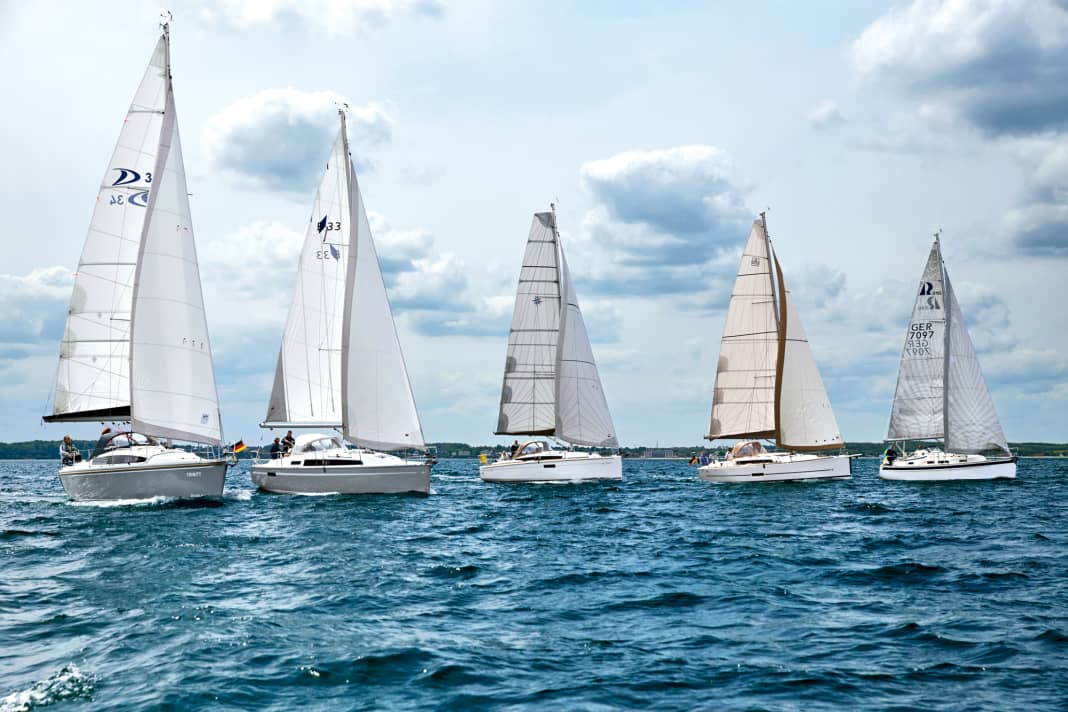





- Bathing ladders and platforms for family yachts
- Deck layout and operation
- Wheel, wheels or tiller on the family yachts
- Anchor boxes and bow baskets
- Measured values in comparison
- Conclusion after part 1
- Data and prices of the family yachts in detail
- Video of 10 metre family yachts under sail
In the test:
- Bavaria Cruiser 33
- Delphia 34
- Dufour 350
- Hallberg-Rassy 310
- Sun Odyssey 349
All parts of the comparison of the 10 metre family yachts:
Just under ten metres long and up to three and a half metres wide: These dimensions represent certain cruising boats on the market that almost have a special status. This is the so-called entry-level class, even if it could be debated whether yachts whose prices as used boats only start at 40,000 euros (Bavaria) or even 130,000 euros (Hallberg-Rassy) should be given such a label. Of the boats tested, only the Sun Odyssey 349 is still on the market as a new boat, and there is also a Sun Odyssey 350 in sight to replace it. However, the comparison of the boats presented here is a good guide for those interested in used boats.
In any case, this size of boat is the subject of particular attention from high-volume shipyards. In addition to unit numbers, the aim here is also to bind new customers and those switching to the brand. For the manufacturers, this means building boats that fulfil the requirements of a clientele that is often very accurate in its comparisons, but also represent the typical brand values.
Yachts in the large small class are on the wish list of many potential customers. The reasons for this are obvious: on the one hand, it is the manageable size, which even beginners can cope with and which also offers a great deal of safety in terms of handling. Secondly, the boats are already large enough for the family or a cruise with friends, with the now standard configuration levels up to three cabins. In addition, the yachts in this class in particular cover an extremely broad spectrum. They are just as suitable for holidays and weekend cruises as they are as daysailers or as regatta boats for club racing.
Representative cross-section of the family yacht segment
So it's no wonder that all leading manufacturers serve the ten-metre segment and are also busy updating their family yacht models.
The starting point for the comparison test is the Ancora Marina in Neustadt on the Bay of Lübeck. German boatbuilding is represented by the Cruiser 33 from Bavaria. The Poles from Delphia are sending their recently completed 34 into the race. Two yachts have come to the Baltic Sea from France, the Dufour 350 and the Sun Odyssey 349 from Jeanneau.
Hallberg-Rassy from Sweden is also taking part, offering an extremely exciting addition to the comparison with the HR 310. Although the Swede is slightly smaller than the competition, she still fits better into the group of entry-level yachts than her sister HR 342, which is larger than the competition. It is clear that the smallest HR is an outsider among the family yachts in this comparison in terms of space and especially in terms of price.
Bathing ladders and platforms for family yachts
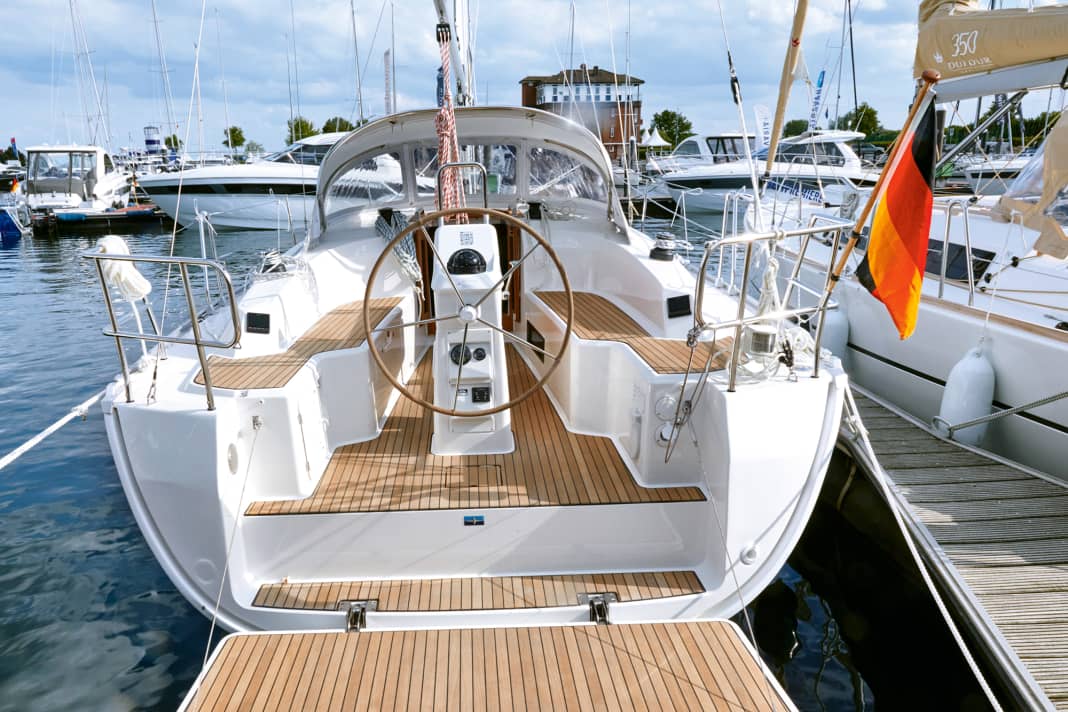





As storms are forecast for the following days on the Baltic Sea, the five participants are immediately sent out onto the water for an initial assessment. The conditions are initially moderate with a maximum wind of 15 knots. Later, it even calms down in the meantime.
Stiffer with more volume
With more pressure initially, the two French women from Dufour and Jeanneau put in a remarkable sailing performance. They build up visibly faster and more pressure than the other boats and immediately take the lead of the field on the cross course. With their chines, both family yachts represent a new, modern type of construction with more volume in the bow and especially in the stern area.
What's more, both the Dufour and the Jeanneau are equipped with a performance package. The good performance of the French boats in the comparison is certainly not least due to this. On the Jeanneau, the large topsail is also heavily flared.
The Hallberg-Rassy 310 also benefits from a better set of sails as an upgrade to the standard scope. Although she doesn't quite come close to the Dufour and the Jeanneau on the cross, she consistently proves to be their toughest pursuer.
Deck layout and operation
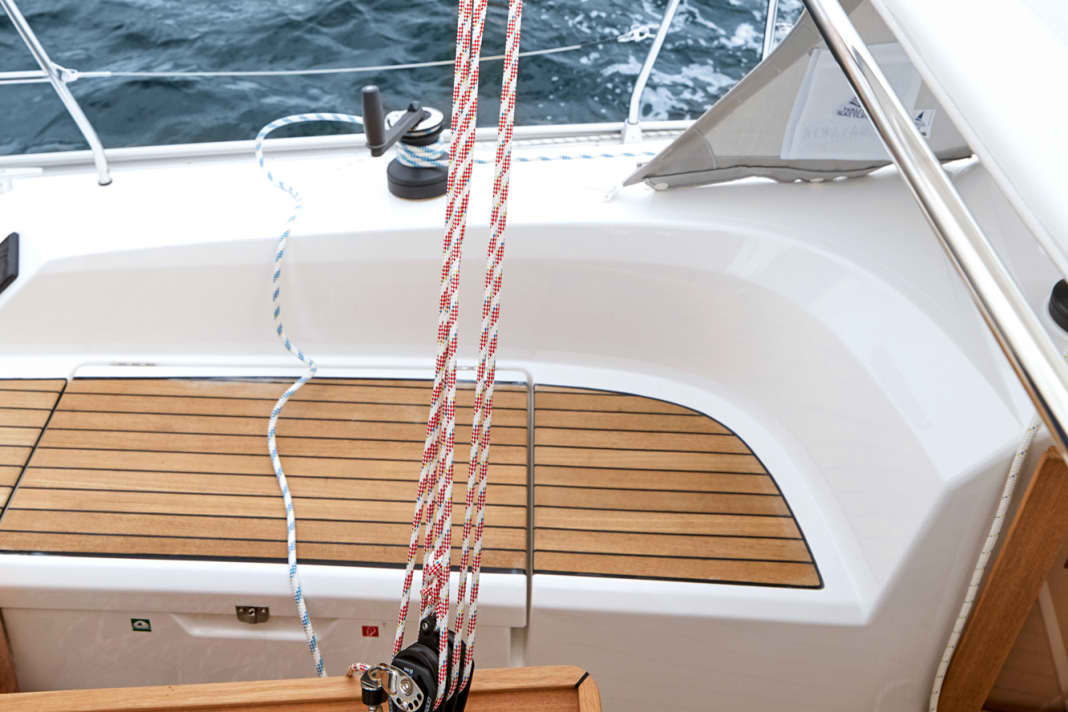





The Cruiser 33 from Bavaria, the only boat to be tested with a furling mast, put in a surprisingly good performance. The supposed disadvantage of the heavy rig with less sail area hardly seems to matter; the Bavaria can keep up well with the wind in the field. It is even equipped with a fixed pitch propeller - all the other boats have folding propellers. However, this is only standard on Hallberg-Rassy.
The Delphia 34 struggles a little at first, but performs better and better as the wind decreases. On the downwind course, she quickly makes up the ground lost at the cross and even takes the lead at times on the downwind leg when there is less wind. The Delphia test boat is equipped with simple standard sails (Dacron) made in Poland.
With a lot of pressure and gusts of over 30 knots on the following days, comparative sailing within the group of family yachts is out of the question. Nevertheless, all the boats are taken out of the harbour again. In terms of rigidity, there are considerable differences between the remarkably wide French boats with their high stability and the more conservative hull lines of Bavaria, Delphia and Hallberg-Rassy in marginal conditions.
The Dufour and Jeanneau models sail more upright and handle gusts better; they are less likely to be hit by the sun. The Jeanneau boat is the only one in the competition to be equipped with double rudder blades. Loss of control is not an issue, even with a little more heel.
As expected, the Hallberg-Rassy 310 also copes well with the strong wind. She has the highest ballast ratio of the five boats, but is also the boat with the most pronounced aspect ratio. The pretty Swede is unimpressed by the prevailing conditions and completes the demanding course without any problems. Only on the deep downwind course does the Swede occasionally start to roll. However, by steering sensitively, as the tiller allows, she can be easily caught again.
Steering and turning
The Hallberg-Rassy 310 is the only boat with a tiller in the test field of family yachts, which sets it apart from the exclusively wheel-steered competition and makes it hardly comparable in terms of its steering characteristics. Important to know: None of the five boats offer a choice between wheel and tiller steering.
The Cruiser 33 from Bavaria and the Delphia 34 have a cockpit layout with just one wheel. On the German boat, the coaming is cut away in the helmsman's working area. This allows the helmsman to sit further out with a good view of the foresail and put the wheel between his legs. Incidentally, the Giebelstadt-based company is also working on a version of its smallest yacht with two steering wheels. On the Delphia, the central steering column is installed comparatively far forward. The coamings run all the way aft. This means that the helmsman sits relatively low, but is also very well protected and safe.
Wheel, wheels or tiller on the family yachts
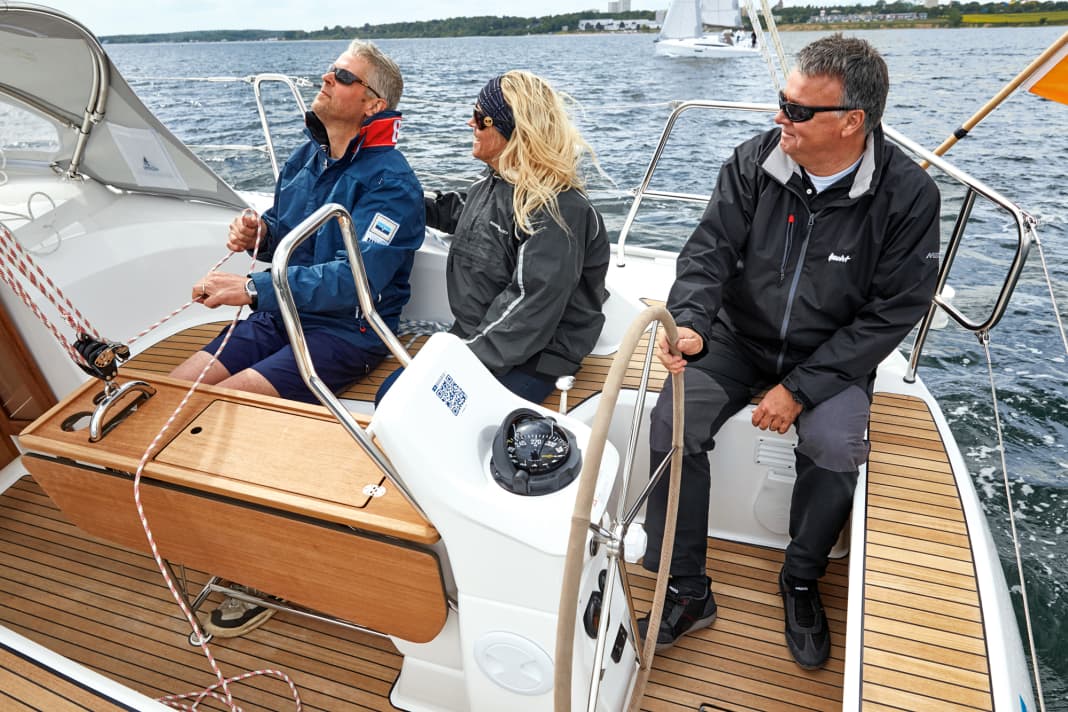





The family yachts from Dufour and Jeanneau both come with comparable cockpits and two steering wheels. The great advantage of this arrangement, apart from the seating position, is the free cockpit. This arrangement has considerable advantages, especially when touring, when you often board and disembark via the stern and the open bathing platform. When sailing, the helmsman is less well protected on the Dufour and Jeanneau, but sits on the very outside and, when heeling, also noticeably higher, which favours the view forwards and into the sails.
The two French ships do not have aft stays. This gives the helmsman more room to manoeuvre and allows the mainsail to be set at a higher angle. However, this important trimming instrument for more forestay tension is missed, especially in stronger winds. The rigs from Dufour and Jeanneau are designed to compensate for this with longer and even more swept-back spreaders.
The short genoa with 105 to 110 per cent overlap is standard on all boats in the comparison. A self-tacking jib is also offered as an option by all manufacturers.
Technical details
In terms of steering mechanics, the Delphia yacht has advantages. The system works continuously via push rods and cardan drives and is therefore hardly susceptible to breakdowns. The installation is also perfectly accessible through a hatch under the cockpit floor, making it extremely easy to maintain.
The disadvantage of the pushrod mechanism: It provides less feedback on the Delphia via the pressure on the rudder blade. In the test, it was therefore difficult to steer it sensitively in the wind. A minimum of rudder pressure is missing.
Anchor boxes and bow baskets
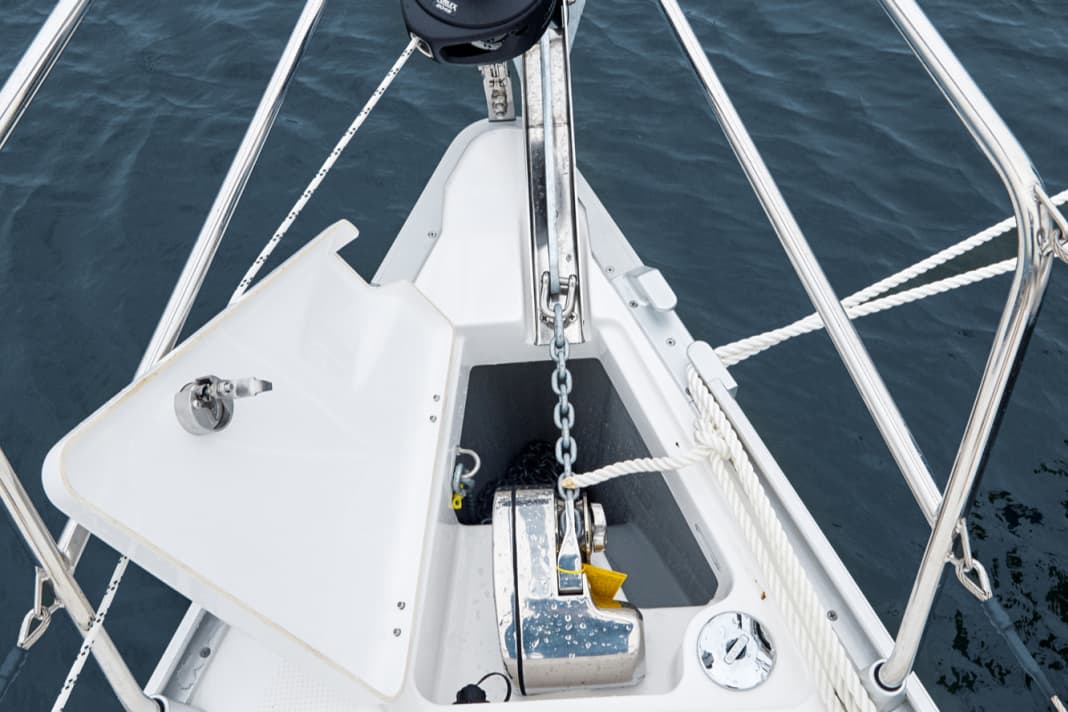





On the French family yachts, the two steering wheels are only connected to the quadrants by a continuous cable. Although this ensures smooth running, it offers no redundancy should the mechanics of one of the two steering columns fail. Two separate cables would be better in both cases. On the Jeanneau, the steering quadrants are also difficult to access for maintenance and inspection. On the Dufour, it is easier to access the mechanics through the aft cabin. The same applies to the Bavaria.
On Delphia, Dufour and Jeanneau, the amount of storage space in the cockpit depends primarily on whether the boat is ordered with two or three cabins. Accordingly, a large locker under the benches in the cockpit is either possible or not. Because the Delphia's thwarts extend all the way to the stern, the three-cabin version of the Polin can still boast two good-sized lockers. Dufour and Jeanneau have additional storage space at the very stern. In both cases, a life raft can even be stored there.
The French attach more importance to safe handling of the raft than the competition. With Bavaria, Delphia and Hallberg-Rassy, the rescue equipment must be carried in the forecastle or lashed to the pushpit.
Family yachts with variance in draughts
All the boats in the test come with an L-keel as standard and draughts of between 1.80 (Hallberg-Rassy) and 1.98 metres (Jeanneau). There are also alternatives with flat keels that project into the water from 1.40 to 1.55 metres.
Keel variants with flexible draught are currently only offered by the Delphia boats (centreboard version or integral centreboard with internal ballast) and the Jeanneau (which can also be ordered with a swing keel and two rudder blades). This makes the Sun Odyssey 349 the only boat in the comparison that is also suitable for falling dry if necessary.
From the shipyard, all 10 metre family yachts are fitted with a 19 hp diesel engine. For Jeanneau, this comes from Yanmar, while Volvo Penta is the supplier for all others. The Bavaria, the Dufour and the Hallberg-Rassy will be equipped with a saildrive, while the Jeanneau and the Delphia will have a shaft drive.
Measured values in comparison




The Dufour 350 emerges as the winner of the manoeuvring tests in the harbour. Because the rudder blade is fitted further forward, the boat turns over a very tight radius and reacts more quickly to rudder deflections. It accelerates forwards and backwards in a straight line and the rudder responds immediately.
The Dufour's good performance in the harbour manoeuvres is also due to the fact that the test boat is fitted with a larger engine with 30 hp. Bavaria and Delphia also offer the option of a more powerful engine. On the Hallberg-Rassy and the Sun Odyssey, however, only the 19-hp engine is possible.
The Jeanneau also shows good behaviour under engine power. Although the two rudder blades are not directly driven by the propeller, the boat reacts even at the slightest speed. The Delphia and the Bavaria are somewhat slower when manoeuvring and respond less quickly to the rudder's deflections.
Caution is advised when reversing with the Hallberg-Rassy 310. The forces on the rudder blade with a rigid connection to the tiller are enormous.
Conclusion after part 1
Under sail and especially in windy conditions, the two French boats set the pace. With their modern hulls, the Dufour 350 and the Jeanneau Sun Odyssey 349 sail stiffly, quickly and also run a good height. The Bavaria Cruiser 33, the Delphia 34 and the Hallberg-Rassy 310 have advantages in terms of deck equipment, handling and safety. After part 1 of the comparison test of the 10 metre family yachts, there is still no clear leader.
Data and prices of the family yachts in detail
Bavaria Cruiser 33
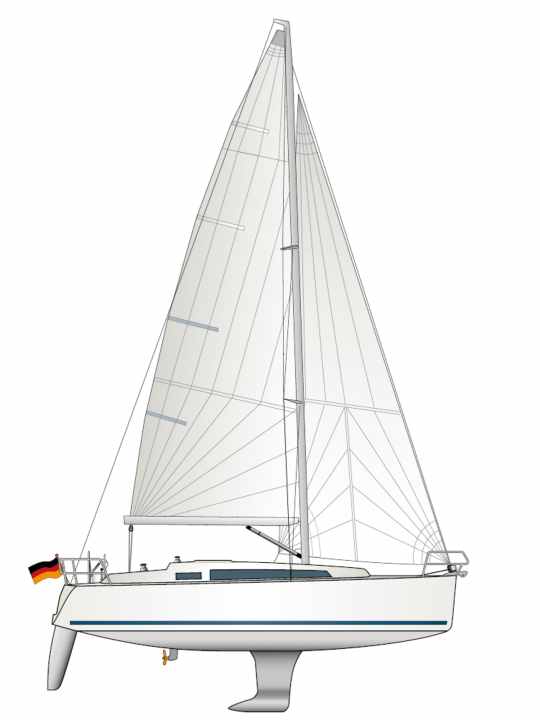
Technical data
- Torso length:9,75 m
- Waterline length:8,85 m
- Width:3,42 m
- Draught/alternative:1,95/1,40 m
- Weight:5,2 t
- Ballast/proportion:1,3 t/25 %
- Mainsail:28,3 m²
- Furling genoa (106 %):22,3 m²
- machine (Volvo Penta D1-20):13 kW/19 hp
Price and shipyard
- Used boat price:40,000 to € 110,000 (as at 01/2024)
- Shipyard:Bavaria Yachtbau, 97232 Giebelstadt; www.bavaria-yachtbau.de
YACHT rating
Well-functioning, well-rounded overall package. Cockpit layout with just one steering wheel
- Design and concept
- + Compact cockpit, user-friendly layout
- + Large bathing platform and best service
- +/- Conventional appearance
- Sailing performance and trim
- + Solid sailing performance despite furling mast
- + Central mainsheet easily accessible everywhere
Delphia 34
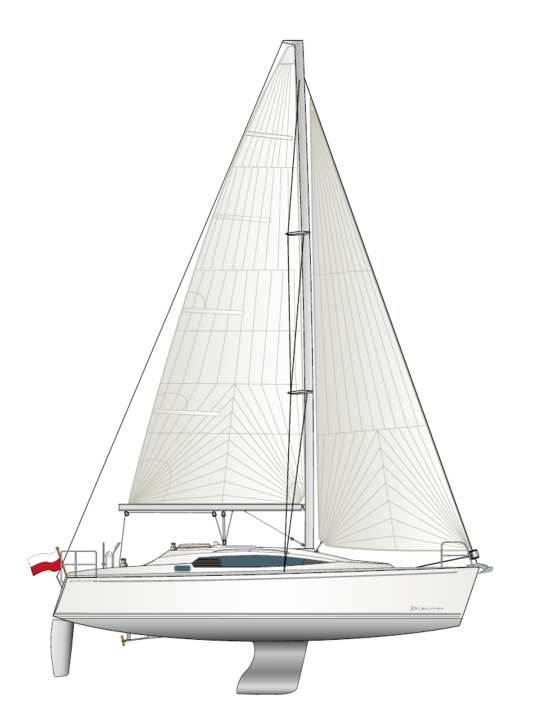
Technical data
- Torso length:9,95 m
- Length:Waterline 9.14 m
- Width:3,47 m
- Low/alternative:1,85/0,75-1,90, 0,48-1,67 m
- Weight:5,0 t
- Ballast/proportion:1,7 t/33 %
- Mainsail:27,0 m²
- Furling genoa (105 %):23,7 m²
- machine (Volvo Penta D1-20):13 kW/19 hp
Price and shipyard
- Used boat price:69,000 to € 79,000 (as at 01/2024)
- Shipyard: Delphia Yachts Kot, 19-400 Olecko (Poland); www.delphiayachts.eu
YACHT rating
Visually unobtrusive all-rounder with many beautifully finished details and technically flawless equipment. Cockpit with a steering wheel
- Design and concept
- + Deep, well-protected cockpit, long dikes
- + Wide range of keel and draught options
- +/- Conventional design
- Sailing performance and trim
- + Solid sailing performance upwind and downwind
- - Boat could do with more stability
Dufour 350
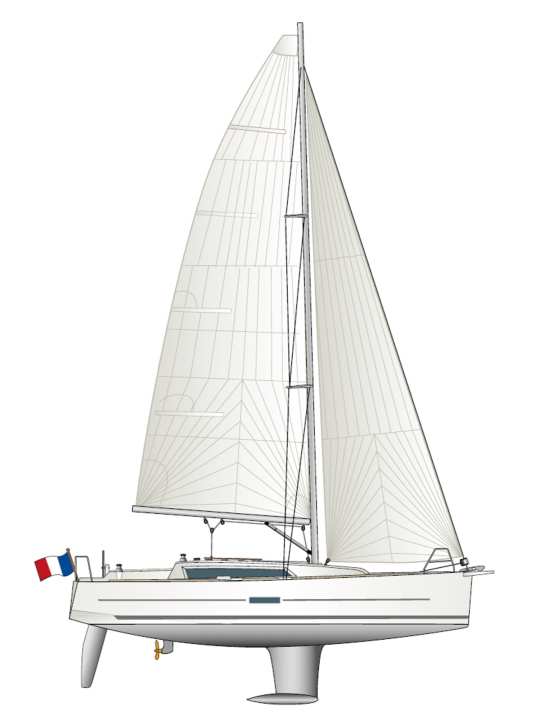
Technical data
- Torso length:9,98 m
- Waterline length:9,00 m
- Width:3,54 m
- Draught/alternative:1,90/1,55 m
- Weight:5,7 t
- Ballast/proportion:1,6 t/27 %
- Mainsail:34,5 m²
- Furling genoa (108 %):25,5 m²
- machine (Volvo Penta D1-20):13 kW/19 hp
Price and shipyard
- Used boat price: (as at 01/2024)
- Shipyard: Dufour Yachts, 17187 Périgny (France); www.dufouryachts.com
YACHT rating
The longest and widest boat in the comparison. The test boat was powerful on the wind, but benefited from a performance package
- Design and concept
- + Attractive appearance, modern design
- + Storage space at the stern, also for life raft
- - Little space behind the steering wheels
- Sailing performance and trim
- + High potential in all wind conditions
- + Good performance package
Hallberg-Rassy 310
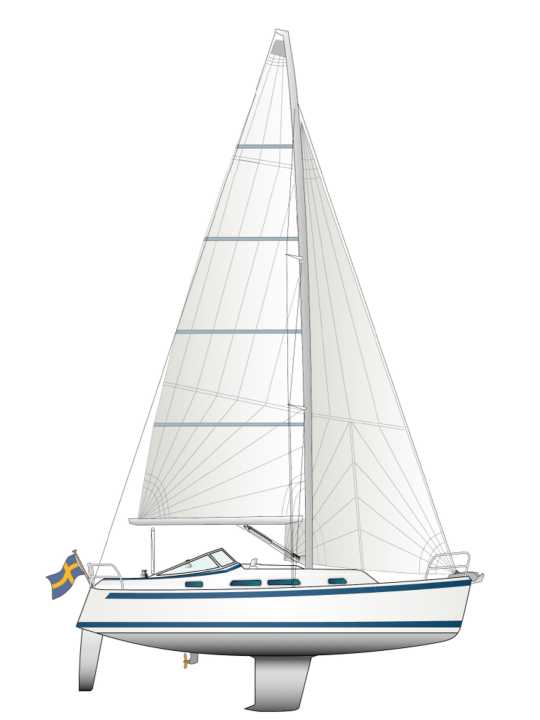
Technical data
- Torso length:9,42 m
- Waterline length:8,80 m
- Width:3,18 m
- Draught/alternative:1,80/1,50 m
- Weight:4,4 t
- Ballast/proportion:1,7 t/39 %
- Mainsail:25,5 m²
- Furling genoa (107 %):21,7 m²
- machine (Volvo Penta D1-20):13 kW/19 hp
Price and shipyard
- Used boat price: 135,000 to € 170,000 (as at 01/2024)
- Shipyard: Hallberg-Rassy Vervs AB, 47431 Ellös (Sweden); www.hallberg-rassy.com
YACHT rating
Test participant with a special role. Smaller, older (built in 2009) and also more expensive than the other ships in the field
- Design and concept
- + High-quality, complete deck equipment
- + Timelessly beautiful boat with conventional lines
- - Smallest cockpit among the competition
- Sailing performance and trim
- - Sails fast and stiff, especially in strong winds
- - Very good trimming options, good handling
Sun Odyssey 349
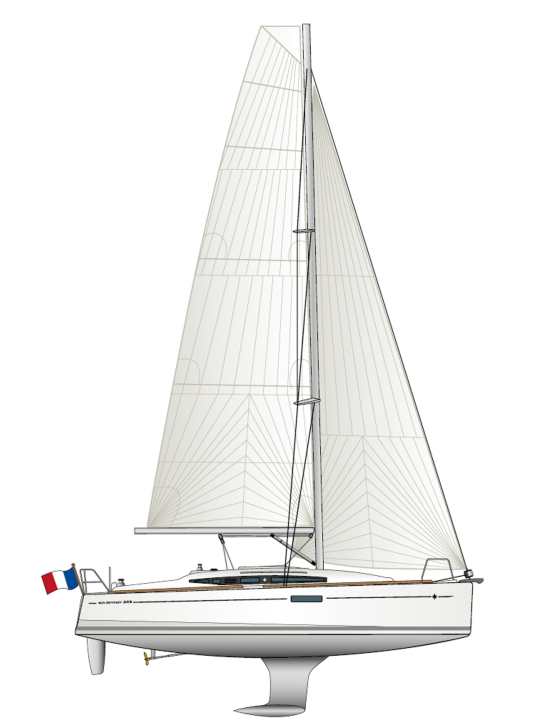
Technical data
- Torso length:9,97 m
- Waterline length:9,40 m
- Width: 3,44 m
- Draught/alternative:1,49/1,26-2,54 m
- Weight:5,3 t
- Ballast/proportion:1,6 t/30 %
- Mainsail:30,7 m²
- Furling genoa (110 %):24,6 m²
- machine (Yanmar 3YM20):13 kW/19 hp
Price and shipyard
- New price ex shipyard: 199,900 € as an anniversary offer
- Shipyard: Chantiers Jeanneau, 85505 Les Herbiers (France); www.jeanneau.com
- Distribution: www.gruendl.de / www.aquamarin-boote.de
YACHT rating
Innovative and modern, appealing design. The Jeanneau offers a large cockpit with plenty of space to work and enjoy
- Design and concept
- + Largest cockpit in comparison
- + Storage space at the stern, also for life raft
- + Two rudder blades, best steering behaviour
- Sailing performance and trim
- + Potential easily retrievable, good sheet guides
- + Good performance package
Video of 10 metre family yachts under sail
The comparison test first appeared in YACHT issues 16 and 17/2015 and has been revised for the online version.

